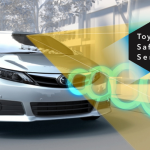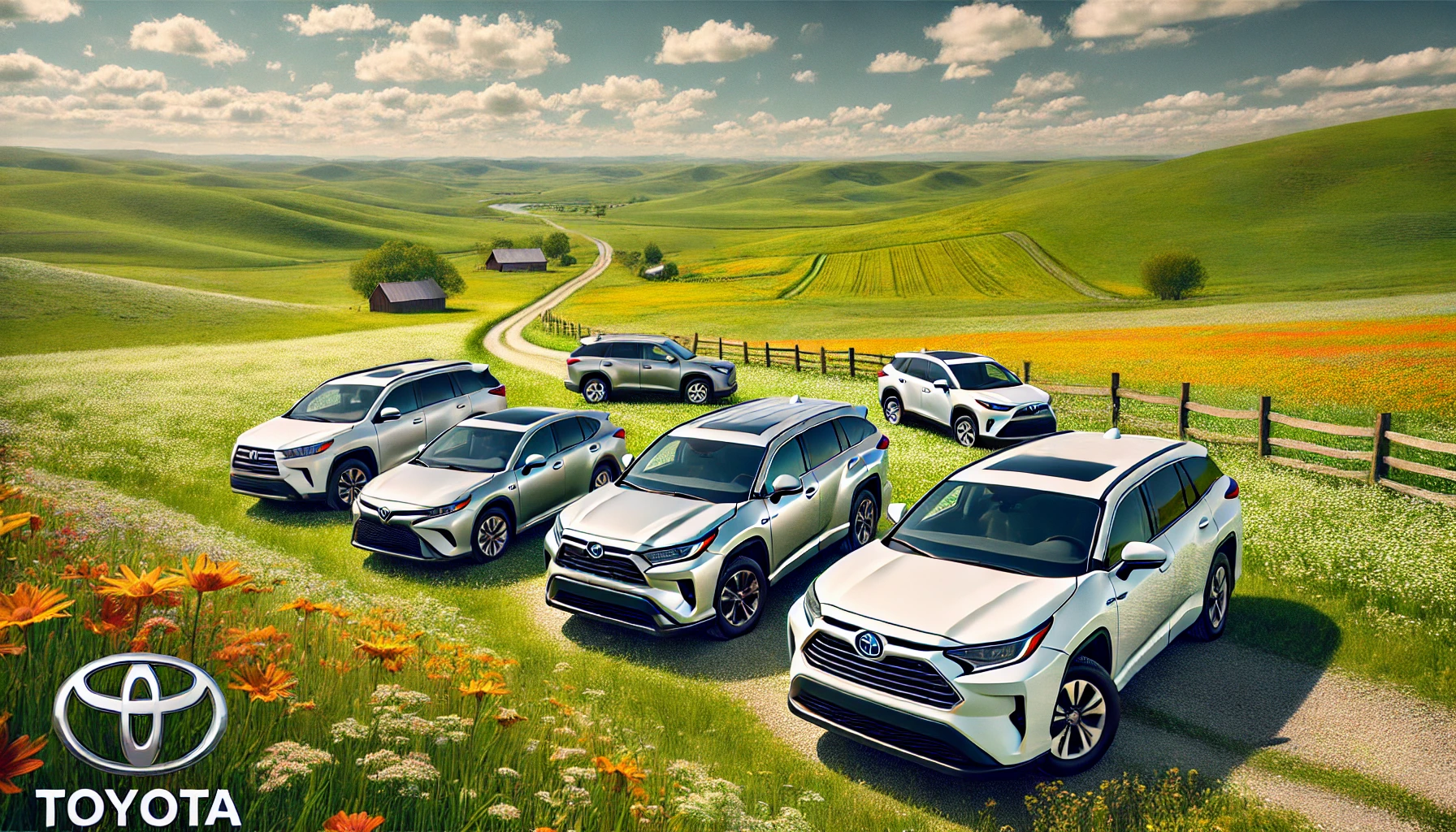As the global automotive industry moves toward a more sustainable future, Toyota is not only leading the way in fuel efficiency but also pushing the boundaries of hydrogen fuel cell and electric vehicle (EV) technology. These innovations go beyond improving traditional internal combustion engines—they represent a shift toward cleaner, zero-emission transportation that has the potential to transform mobility worldwide.
Toyota’s leadership in hydrogen and electric vehicle technology is a testament to its commitment to a carbon-neutral future. In this article, we’ll explore Toyota’s key breakthroughs in hydrogen and EV technology, its ongoing efforts to expand these technologies, and how these advancements are driving the future of sustainable transportation.
1. Hydrogen Fuel Cell Technology: The Power of Zero Emissions
While electric vehicles are gaining traction globally, Toyota has long been a champion of hydrogen fuel cell vehicles (FCEVs) as a complementary solution to battery electric vehicles. Hydrogen-powered vehicles use fuel cells to generate electricity by combining hydrogen with oxygen, producing only water vapor as a byproduct. This zero-emission technology is ideal for long-distance driving and heavy-duty applications, making it an important part of Toyota’s strategy for carbon-neutral transportation.
Toyota’s flagship hydrogen fuel cell vehicle, the Toyota Mirai, showcases the potential of hydrogen technology. Since its debut in 2014, the Mirai has been one of the most advanced and widely recognized fuel cell vehicles on the market, with a second-generation model released in 2020. The Mirai offers several advantages over traditional internal combustion and electric vehicles:
- Zero Emissions: The Mirai emits only water vapor, making it one of the cleanest vehicles available today.
- Long Range: The second-generation Mirai has an estimated range of over 400 miles on a single hydrogen tank, making it comparable to gasoline-powered cars and eliminating the range anxiety often associated with electric vehicles.
- Quick Refueling: Refueling the Mirai takes just a few minutes, similar to filling up a conventional gas tank. This fast refueling time makes hydrogen vehicles more practical for long-distance travel.
In addition to passenger vehicles like the Mirai, Toyota is also exploring hydrogen fuel cell technology for commercial and heavy-duty vehicles. Through its Project Portal, Toyota is developing hydrogen-powered trucks that can be used in industries like shipping, logistics, and public transportation, where battery-electric solutions may not be practical due to the need for extended range and heavy payloads.
2. Scaling Hydrogen Infrastructure: The Key to Adoption
One of the main challenges to widespread adoption of hydrogen fuel cell vehicles is the need for a robust hydrogen refueling infrastructure. Toyota recognizes this challenge and is working with governments, energy companies, and other automakers to expand the network of hydrogen refueling stations around the world.
In markets like Japan, California, and parts of Europe, Toyota is leading efforts to build hydrogen stations that support both passenger and commercial vehicles. The company has partnered with organizations such as Shell and Air Liquide to accelerate the development of hydrogen infrastructure and make it more accessible to consumers.
By investing in hydrogen infrastructure, Toyota is laying the groundwork for a future where hydrogen fuel cell vehicles can become a viable option for drivers seeking zero-emission transportation, especially in regions where long-distance travel is common or where battery-electric solutions may not be sufficient.
3. Toyota’s Breakthroughs in Battery Electric Vehicles (BEVs)
While Toyota has long been a leader in hybrid technology, the company is now making significant strides in battery electric vehicle (BEV) development. Toyota’s approach to BEVs is focused on creating a diverse lineup of electric vehicles that meet the needs of different drivers while offering the latest innovations in battery technology, design, and performance.
Toyota plans to introduce 15 new BEV models by 2025, with the Toyota bZ4X leading the charge. The bZ4X, an all-electric SUV, is the first model in Toyota’s bZ (Beyond Zero) series, a dedicated lineup of BEVs designed to go beyond zero emissions and provide a superior driving experience. The bZ4X showcases Toyota’s commitment to making electric vehicles more accessible and desirable, with features like:
- e-TNGA Platform: The bZ4X is built on Toyota’s e-TNGA platform, a flexible architecture designed specifically for electric vehicles. The e-TNGA platform allows Toyota to create BEVs with various battery sizes, motor configurations, and driving ranges, ensuring that customers have a wide range of options.
- Long Range and Fast Charging: The bZ4X offers a competitive driving range, with estimates of 250-300 miles on a single charge, depending on the model. The vehicle also supports fast charging, allowing drivers to recharge up to 80% of the battery in about 30 minutes at high-speed charging stations.
- Advanced Safety and Technology: The bZ4X comes equipped with Toyota’s latest Toyota Safety Sense™ features, including adaptive cruise control, lane-keeping assist, and automatic emergency braking. It also offers advanced infotainment options, such as wireless smartphone integration and over-the-air software updates.
As Toyota expands its BEV lineup, the company is committed to ensuring that electric vehicles are not only environmentally friendly but also practical and enjoyable to drive.
4. Solid-State Batteries: Revolutionizing Electric Vehicles
One of Toyota’s most exciting breakthroughs in electric vehicle technology is its development of solid-state batteries, which have the potential to revolutionize the EV market. Solid-state batteries differ from traditional lithium-ion batteries by using a solid electrolyte instead of a liquid one. This innovation offers several key advantages:
- Higher Energy Density: Solid-state batteries can store more energy in a smaller and lighter package, which translates to longer driving ranges for electric vehicles.
- Faster Charging: These batteries can be charged more quickly than conventional lithium-ion batteries, reducing charging times and making electric vehicles more convenient for everyday use.
- Improved Safety: Solid-state batteries are less prone to overheating and fires, addressing one of the safety concerns associated with lithium-ion batteries.
Toyota has been a leader in the development of solid-state battery technology and aims to commercialize these batteries in its electric vehicles in the coming years. By introducing solid-state batteries, Toyota will significantly enhance the performance and practicality of its BEVs, making them even more appealing to a broader range of drivers.
5. Electrifying All Segments: Hybrid, Plug-in Hybrid, and Electric
Toyota’s electrification strategy is unique in its multi-pronged approach, which includes hybrid electric vehicles (HEVs), plug-in hybrid electric vehicles (PHEVs), and BEVs. This diversified approach allows Toyota to offer electrified options for every type of driver, regardless of their specific needs or driving habits.
- Hybrid Electric Vehicles (HEVs): Toyota has been a pioneer in hybrid technology for over two decades, with models like the Toyota Prius and Corolla Hybrid leading the way. HEVs combine a gasoline engine with an electric motor to improve fuel efficiency and reduce emissions. These vehicles are ideal for drivers who want to reduce their environmental impact without relying solely on electric power.
- Plug-in Hybrid Electric Vehicles (PHEVs): Toyota’s Prius Prime and RAV4 Prime offer the best of both worlds by allowing drivers to use electric power for short trips while still having the flexibility of a gasoline engine for longer journeys. PHEVs can be plugged in to recharge the battery, making them an ideal option for drivers who want to reduce fuel consumption but may not have access to a full charging infrastructure.
- Battery Electric Vehicles (BEVs): With the introduction of the bZ series and other upcoming electric models, Toyota is expanding its BEV lineup to meet the growing demand for fully electric vehicles. BEVs produce zero tailpipe emissions and are a key part of Toyota’s vision for a carbon-neutral future.
By offering a wide range of electrified vehicles, Toyota ensures that consumers have access to the most suitable technology for their driving habits and environmental goals.
6. Toyota’s Role in the Global EV Transition
Toyota’s commitment to hydrogen and electric vehicle technology goes hand in hand with its broader goal of achieving carbon neutrality by 2050. The company is actively working with governments, energy providers, and industry partners to accelerate the transition to zero-emission vehicles and build the infrastructure needed to support this shift.
In addition to developing new vehicle technologies, Toyota is investing in renewable energy to power its manufacturing plants and reduce the carbon footprint of vehicle production. The company’s Environmental Challenge 2050 sets ambitious targets for reducing emissions across the entire vehicle lifecycle, from production to end-of-life recycling.
As the world moves toward a cleaner, more sustainable transportation system, Toyota is playing a leading role in this transition by providing innovative and practical solutions that make zero-emission vehicles accessible to all.
Conclusion: Toyota’s Breakthroughs Driving the Future of Zero-Emission Mobility
Toyota’s breakthroughs in hydrogen and electric vehicle technology are driving the future of zero-emission mobility. From the hydrogen-powered Toyota Mirai to the fully electric bZ series, Toyota is pushing the boundaries of what’s possible in sustainable transportation. With a focus on innovation, infrastructure development, and accessibility, Toyota is not just building cars—it’s building a cleaner, greener future for generations to come.
As the company continues to expand its hydrogen and electric vehicle lineup, Toyota’s vision of a world where zero-emission vehicles are the norm is becoming a reality. Whether through hydrogen fuel cell technology or battery electric vehicles, Toyota is leading the charge toward a more sustainable future, one breakthrough at a time.




